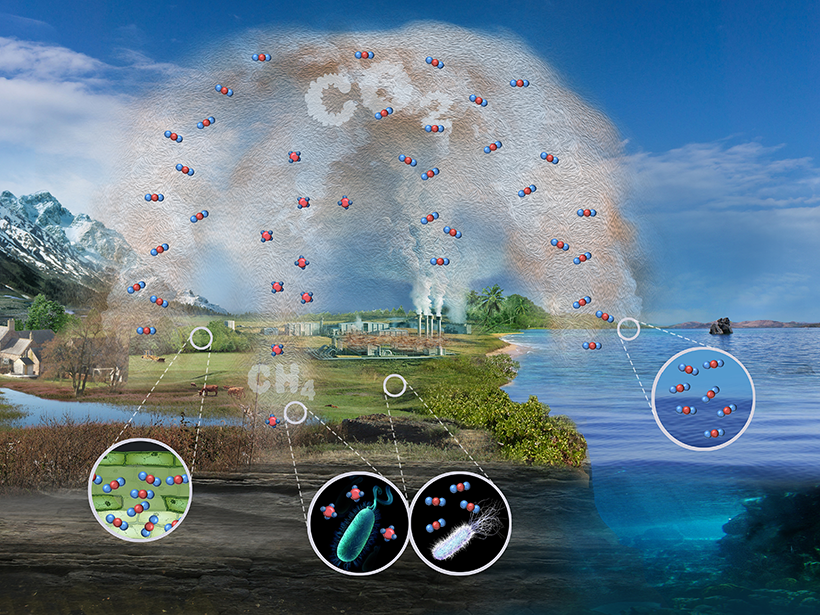Katherine Johnson Dies at 101; Mathematician Broke Barriers at NASA. An excellent article about the background and career of one of the Black women “computers” whose calculations underpinned the successful flights of the first American astronaut in space, the first to orbit Earth, and the 1969 Moon landing. Also check out this short video in which AGU’s CEO Chris McEntee and an AGU staff member interviewed Mrs. Johnson in 2017.

—Faith Ishii, Production Manager
What Kind of Rock Is The Rock? The estimable Mika McKinnon answering the question you most needed an answer to (and sneakily teaching you a bit of geology at the same time):
FAQ: Is @TheRock igneous, metamorphic, or sedimentary?
— Mika McKinnon (@mikamckinnon) February 24, 2020
A: It’d be rude to examine his texture, so consider his origin & path.
He’s evolved under immense pressure, dramatically changed yet never shattered, and doesn’t explode even when provoked.
Metamorphic. pic.twitter.com/sW4RKZ3JyV
The Rock seems to be a fan of his metamorphic classification:
https://twitter.com/TheRock/status/1232537253571964930
Plus, a bonus classification of Ben Grimm, aka The Thing, who proves to be much more straightforward:
The Thing is rapidly-cooled igneous rock, specifically columnar basalts.
— Mika McKinnon (@mikamckinnon) February 24, 2020
This is consistent with his origin, his texture, his toughness, and his rare-but-repeating brief regressions to human form.
It also makes him geologic kin to Giant’s Causeway & Devils Tower. https://t.co/xL5UjH2Cqh
—Kimberly Cartier, Staff Writer
How Clean Is the Anacostia River? Ask a Robot. The robots are at it again! This time, they could help us enjoy our local waterways without worrying about harmful bacteria. An artificial intelligence company from Boston is doing pro bono work for nonprofits, and one of its projects will use current water conditions and past data to calculate water quality in Washington, D.C.’s Anacostia River. The tech is still in progress, but if it works, we could have local daily water quality forecasts before summer. If this means more worry-free paddleboarding, I for one welcome our robot overlords.
—Jenessa Duncombe, Staff Writer
In Praise of Replication Studies and Null Results. We recently published an opinion about the importance of repeatability, replicability, and reproducibility in Earth science research, specifically with respect to computationally heavy analyses and modeling. As the authors detailed, it can be difficult for researchers to replicate work by other teams because information about the original data sets, workflows, and computing environments used isn’t always available or complete. In addition to technical complications, there are other barriers to replicability as well—notably, that research and funding institutions, journals, and even scientists themselves often don’t value replication studies (and studies reporting null results) as highly as work presenting novel results and conclusions. This refreshing editorial reiterates the crucial role of these studies in supporting or refuting potentially consequential research—whether it’s related to climate, public health, or other vital issues—and highlights attempts to boost the profile of such work.
—Timothy Oleson, Science Editor
The Future of the Carbon Cycle in a Changing Climate.

This was one of our most popular stories on both social media and the website this week, and it’s an atmospheric sciences home run: Climate change! Modeling and measurement! Fieldwork! And the carbon cycle brings it home!
—Caryl-Sue, Managing Editor
Citation:
(2020), This week: Katherine Johnson, Dwayne Johnson, and other rock stars, Eos, 101, https://doi.org/10.1029/2020EO140856. Published on 28 February 2020.
Text © 2020. AGU. CC BY-NC-ND 3.0
Except where otherwise noted, images are subject to copyright. Any reuse without express permission from the copyright owner is prohibited.

